
|
Astronomy Picture Of the Day (APOD)
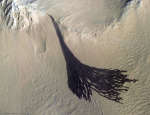 Dark Slope Streaks Split on Mars
Dark Slope Streaks Split on Mars
17.07.2018
What is creating these dark streaks on Mars? No one is sure. Candidates include dust avalanches, evaporating dry ice sleds, and liquid water flows. What is clear is that the streaks occur through light surface dust and expose a deeper dark layer.
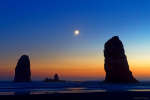 Moon and Venus over Cannon Beach
Moon and Venus over Cannon Beach
16.07.2018
What's that spot next to the Moon? Venus. Two days ago, the crescent Moon slowly drifted past Venus, appearing within just two degrees at its closest. This conjunction, though, was just...
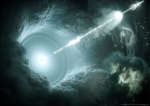 Neutrino Associated with Distant Blazar Jet
Neutrino Associated with Distant Blazar Jet
15.07.2018
With equipment frozen deep into ice beneath Earth's South Pole, humanity appears to have discovered a neutrino from far across the universe. If confirmed, this would mark the first clear detection of cosmologically-distant...
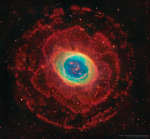 Rings Around the Ring Nebula
Rings Around the Ring Nebula
14.07.2018
There is much more to the familiar Ring Nebula (M57), however, than can be seen through a small telescope. The easily visible central ring is about one light-year across, but this remarkably deep exposure...
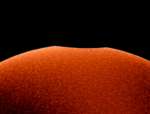 A Nibble on the Sun
A Nibble on the Sun
13.07.2018
The smallest of the three partial solar eclipses during 2018 was just yesterday, Friday, July 13. It was mostly visible over the open ocean between Australia and Antarctica. Still, this video frame...
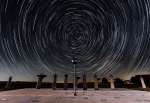 Star Trails and the Bracewell Radio Sundial
Star Trails and the Bracewell Radio Sundial
12.07.2018
Sundials use the location of a shadow to measure the Earth's rotation and indicate the time of day. So it's fitting that this sundial, at the Very Large Array Radio Telescope Observatory in New Mexico, commemorates the history of radio astronomy and radio astronomy pioneer Ronald Bracewell.
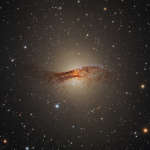 Centaurus A
Centaurus A
11.07.2018
Only 11 million light-years away, Centaurus A is the closest active galaxy to planet Earth. Spanning over 60,000 light-years, the peculiar elliptical galaxy also known as NGC 5128, is featured in this sharp telescopic view.
 Symbiotic R Aquarii
Symbiotic R Aquarii
10.07.2018
You can see it change in brightness with just binoculars over the course of a year. Variable star R Aquarii is actually an interacting binary star system, two stars that seem to have a close, symbiotic relationship.
 Noctilucent Clouds over Paris Fireworks
Noctilucent Clouds over Paris Fireworks
9.07.2018
It's northern noctilucent cloud season -- perhaps a time to celebrate! Composed of small ice crystals forming only during specific conditions in the upper atmosphere, noctilucent clouds may become visible at sunset during late summer when illuminated by sunlight from below.
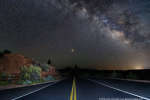 Road to Mars
Road to Mars
8.07.2018
What's that light at the end of the road? Mars. This is a good month to point out Mars to your friends and family because our neighboring planet will not only be its brightest in 15 years, it will be visible for much of night.
|
January February March April May June July August September October November December |
|||||||||||||||||||||||||||||||||||||||||||||||||